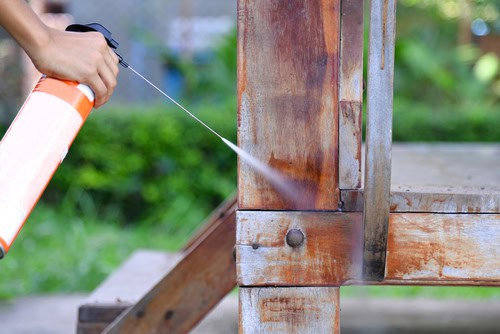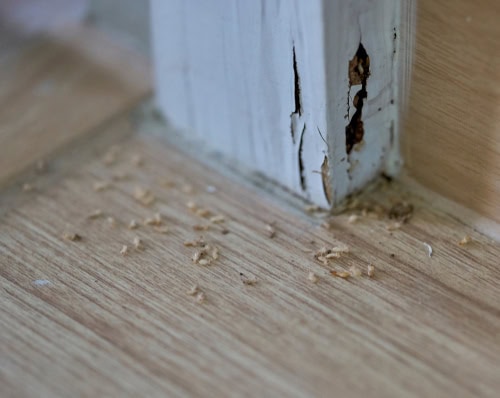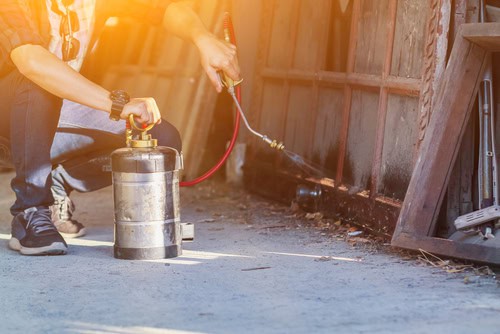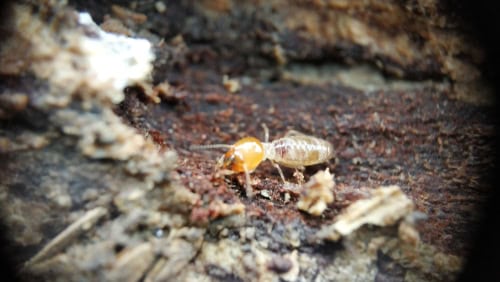
Understanding Termite Infestations in Your Trees
June 22, 2023
Termite Feeding Habits: What Do They Eat and Why?
August 14, 2023Conducting a DIY Termite Inspection: Tips for Homeowners

Conducting a DIY Termite Inspection Tips for Homeowners
Conducting a DIY Termite Inspection: Tips for Homeowners. Termites can be a homeowner’s worst nightmare, causing significant damage to the structure of a house if left unchecked.
Regular termite inspections are vital to catch any infestations early and prevent extensive destruction.
In this comprehensive guide, we will walk you through the process of conducting a DIY termite inspection, equipping you with the knowledge and tools needed to safeguard your home.
Understanding Termite Behavior
Before we delve into the inspection process, it’s crucial to understand termite behavior.
They construct mud tubes for protection and moisture retention, making them challenging to spot until the infestation becomes severe.
If left untreated, termites can cause extensive damage, weakening the structural integrity of your home.
Signs of Termite Infestation
During the inspection, watch for visible signs of termite presence. Here are some indications that you may have a termite infestation:
- Mud tubes: Termites construct mud tubes along walls and foundations to protect themselves while traveling from their nest to their food source.
- Hollow-sounding wood: Tap on wooden structures like walls and furniture. If they sound hollow, it could be a sign of termite damage.
- Frass: Termite droppings, also known as frass, resemble small wood-colored pellets and can be found near termite activity.
Preparing for the Inspection

Before beginning the inspection, gather the necessary tools and equipment. You will need:
- Flashlight: To inspect dark and hard-to-reach areas.
- Screwdriver: Useful for probing wood for hollowness or termite activity.
- Moisture meter: Helps detect areas of excess humidity, which can attract termites.
- Overalls and gloves: Protection against dust and potential allergens during the inspection.
Choose a time when termites are most active, typically during the spring or early summer. Inspect on a sunny day when termites are more likely to be out foraging.
Exterior Inspection
Start the inspection on the exterior of your home:
- Foundation and walls: Check for termite mud tubes along the foundation and exterior walls. These tubes are about the width of a pencil and run vertically or diagonally.
- Wooden structures: Examine wooden decks, fences, and tree stumps for signs of termite activity or damage.
Interior Inspection
Move indoors and inspect the interior of your home:
- Interior walls and baseboards: Look for mud tubes or termite damage along interior walls and baseboards.
- Window frames: Inspect window frames for termite mud tubes or small holes.
- Wooden furniture and belongings: Examine wooden furniture and belongings for any signs of termites, such as hollowed-out wood or frass.
Attic and Roof Inspection
Proceed to the attic and roof for further inspection:
- Attic: Check the attic for mud tubes, termite wings, or damaged wood.
- Roof and eaves: Examine the roof and eaves for termite nests, damaged wood, or signs of infestation.
Basement and Crawl Space Inspection

Inspect the basement and crawl spaces, which are common areas for termite activity:
- Basement: Look for mud tubes, termite damage, or discarded wings.
- Crawl spaces: Examine the crawl space for termite activity and identify and address sources of moisture.
Landscaping and Yard Inspection
Move outdoors and assess the landscaping and yard:
- Landscaping: Check the landscaping for conditions that may attract termites, such as excessive mulch or woodpiles.
- Shrubs near the house: Examine shrubs and plants close to the house, as they can serve as bridges for termites to access your home.
Conducting a Moisture Check
Using a moisture meter, check for areas of excess humidity in and around your home. Addressing moisture issues is essential in preventing termite attraction.
Differentiating Between Termites and Ants
It’s important to differentiate between termites and ants, as they share similarities.
Termites have straight antennae, equal-length wings, and a thick waist, while ants have elbowed antennae, different-sized wings, and a narrow waist.
If you are uncertain, consider seeking professional help for accurate identification.
DIY Prevention Measures
After completing the inspection, implement DIY termite prevention measures:
- Wood treatment: Apply termite repellents or wood treatments to susceptible areas.
- Natural remedies: Use natural solutions like orange oil or boric acid as termite deterrents.
Recording Findings and Taking Photos
During the inspection, keep detailed notes and take photographs of any termite activity, damage, or vulnerable areas.
These records will be helpful for future reference and documentation.
When to Call a Professional
If you discover significant termite activity or damage during the inspection, it’s time to call a professional termite control service.
They have the expertise and equipment to handle severe infestations effectively.

Hiring Professional Termite Inspection Services
While DIY inspections are beneficial for regular maintenance, there are instances where professional assistance becomes necessary.
Consider hiring a reputable termite inspection service if:
- The inspection reveals significant termite activity or damage that requires immediate attention.
- You lack the time, expertise, or necessary tools to conduct a thorough inspection.
- Your property has a history of termite infestations, making regular professional inspections essential.
- You want peace of mind knowing that experts will handle the inspection and provide appropriate recommendations.
Professional termite inspectors have the expertise to identify subtle signs of infestations and can recommend the most effective treatment options for your specific situation.
Regular professional inspections, in combination with DIY preventive measures, provide a robust defense against termite infestations.
Ensuring Long-Term Termite Prevention
Regular termite inspections, both DIY and professional, are crucial for long-term termite prevention.
Additionally, there are several preventive measures you can implement to minimize the risk of termite infestations:
- Eliminate moisture sources: Fix any leaks or drainage issues around your home to reduce humidity levels and remove potential termite attractions.
- Proper landscaping: Choose termite-resistant plants and maintain a clear space between plants and your home’s foundation.
- Foundation maintenance: Regularly inspect and seal any cracks or gaps in the foundation to deny termites entry into your home.
- Termite barriers: Consider installing physical or chemical termite barriers around your property to create an additional defense layer.
Conducting a DIY Termite Inspection: Tips for Homeowners – Conclusion

Conducting a DIY termite inspection is an essential responsibility for homeowners in protecting their properties from these destructive pests.
By understanding termite behavior, recognizing signs of infestation, and implementing preventive measures, you can ensure the longevity and safety of your home.
Regular inspections are key to early detection and successful termite prevention.
Take action today to safeguard your home from the potential devastation caused by termites.
If you need expert assistance or have any concerns, please contact us today!




